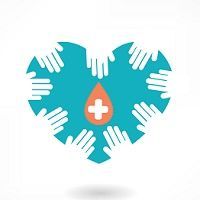- Revenue Cycle Management
- COVID-19
- Reimbursement
- Diabetes Awareness Month
- Risk Management
- Patient Retention
- Staffing
- Medical Economics® 100th Anniversary
- Coding and documentation
- Business of Endocrinology
- Telehealth
- Physicians Financial News
- Cybersecurity
- Cardiovascular Clinical Consult
- Locum Tenens, brought to you by LocumLife®
- Weight Management
- Business of Women's Health
- Practice Efficiency
- Finance and Wealth
- EHRs
- Remote Patient Monitoring
- Sponsored Webinars
- Medical Technology
- Billing and collections
- Acute Pain Management
- Exclusive Content
- Value-based Care
- Business of Pediatrics
- Concierge Medicine 2.0 by Castle Connolly Private Health Partners
- Practice Growth
- Concierge Medicine
- Business of Cardiology
- Implementing the Topcon Ocular Telehealth Platform
- Malpractice
- Influenza
- Sexual Health
- Chronic Conditions
- Technology
- Legal and Policy
- Money
- Opinion
- Vaccines
- Practice Management
- Patient Relations
- Careers
Weighing the Benefits and Risks of Volunteering
Winston Churchill once said, "We make a living by what we do, but we make a life by what we give." That's a good way to think about volunteering.

Winston Churchill once said, “We make a living by what we do, but we make a life by what we give.”
That’s a good way to think about volunteering, a topic that Jill Gora, MD, FAAFP, of New Jersey’s Summit Medical Group, knows very well. Gora returned from her 16th medical mission to Nicaragua this past summer where she works through an organization called Operation Smile to repair cleft lips and palates in children in the developing world.
“We feel called to do this,” says Gora, of the act of volunteering. “And feel that children deserve a chance at a loving home and full life. But I don’t go there to purposely put myself in harm’s way, nor would I be reckless.”
Those comments highlight the benefits and risks inherent when physicians volunteer. And understanding the risks can make the experience much more beneficial.
The Work She Does
Gora is a family physician with Summit Medical Group, but her role on these missions is that of the team pediatrician. Her job is to screen all of the children and adults who come to the mission site with a cleft lip or palate. As part of the screening she conducts a full physical exam to see if they are fit for general anesthesia for surgery, or if they have any other medical problems.
“Many times the children who come to the mission site have never seen a doctor, period,” Gora explains. “They’ve never received medical care, so they’re often ill or they often have undiagnosed medical problems; other congenital problems that we see in concert with cleft lip and palate as more of a syndrome. So, we’re really there to kind of identify that and make sure we address those problems as well.”
Gora acknowledges the risk inherent in doing that work. She explains that in an austere environment where the working conditions and accommodations are much different than those in the US, physicians need to exercise precautions. That’s because, in general, they experience a much more intimate exposure to the patients they treat.
“Whenever you’re coming in contact with the patient’s body fluids, you always use gloves,” Gora says. “And we perform our surgeries to the same exacting standards that we would in the US.”
Safety on Multiple Fronts
Safety of all the providers and staff is paramount. That means basic things like getting the proper rest, which can be challenging in some austere environments where the hours are often long.
“The chance of getting sick is high,” Gora says. “So we bring medications with us, and keep a very close eye on the team.”
But safety goes beyond health and illness. Personal safety issues abound when working in locations where governments are unsettled. As a rule of thumb, Gora says she always notifies the state department of where she’s going to be, so if something were to happen in that country, they know she’s there.
“I always leave contact numbers for people so they can reach me and I can reach them if something goes wrong,” she says. “I’ve been really fortunate to work with an organization that puts safety of the team members first.”
For example, sometimes missions are cut short. And Gora recalls several years back when a mission to Egypt was cancelled when unrest in the country erupted.
“They realized the potential danger our team would face,” she says. “But also that the children we would attract to the mission would be placed in danger. And that’s not what we want.”
Insurance Considerations
Liability and lawsuits are certainly considerations when physicians volunteer within their home communities, but are virtually non-existent where medical missions abroad are concerned. Still, Gora always purchases medical evacuation when traveling.
“If I am so ill or so injured on a mission that I can’t be helped by the doctors on the mission safely in a hospital, then I have medical evacuation insurance,” she says. “And although I don’t think it’s mandatory, it is so highly recommended.”
Things happen, Gora points out, and it’s easy to get very ill while far from home with limited or no resources for assistance.
“I’m not planning to die in the middle of a developing country for something that can be treated here or in a developed country relatively easily,” Gora says.
Despite all the risks, Gora says the benefits of volunteering far outweigh the potential downside.
“I think it puts us in touch with the whole reason we were called to this profession,” she says. “Going on these missions sort of presses the reset button for me. And as much as I put into it, I get back exponentially more than I could ever put into it.”
